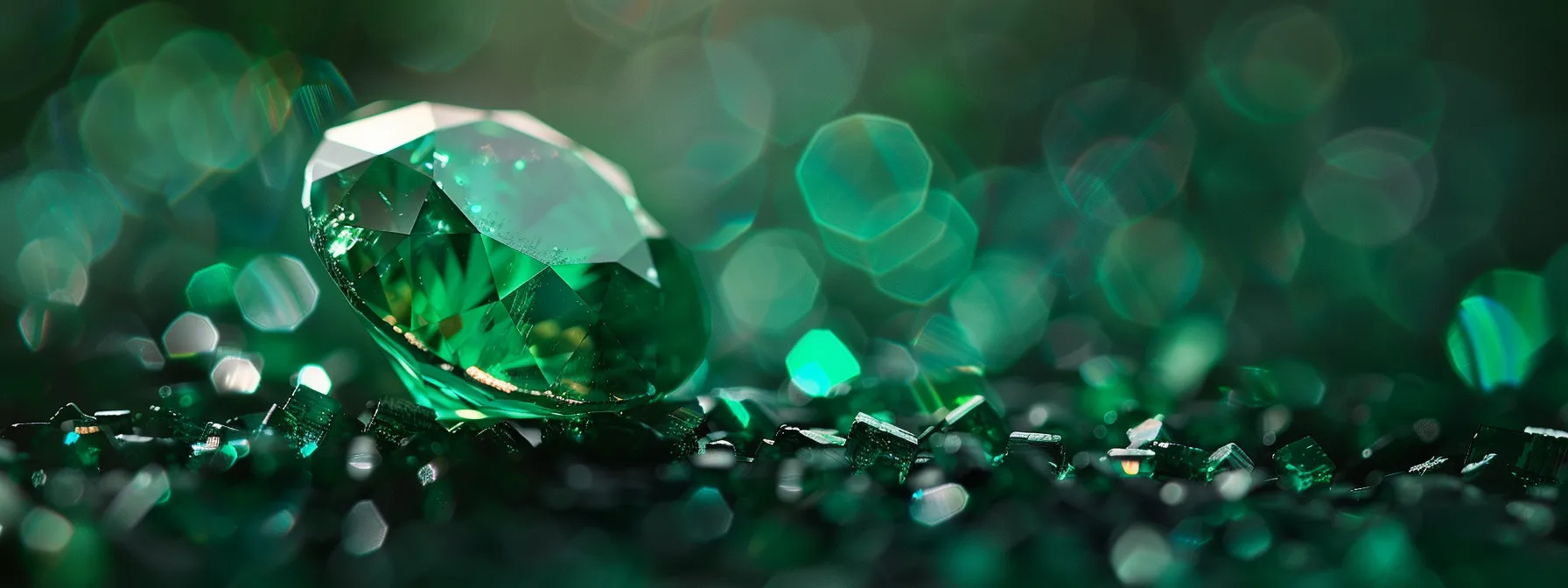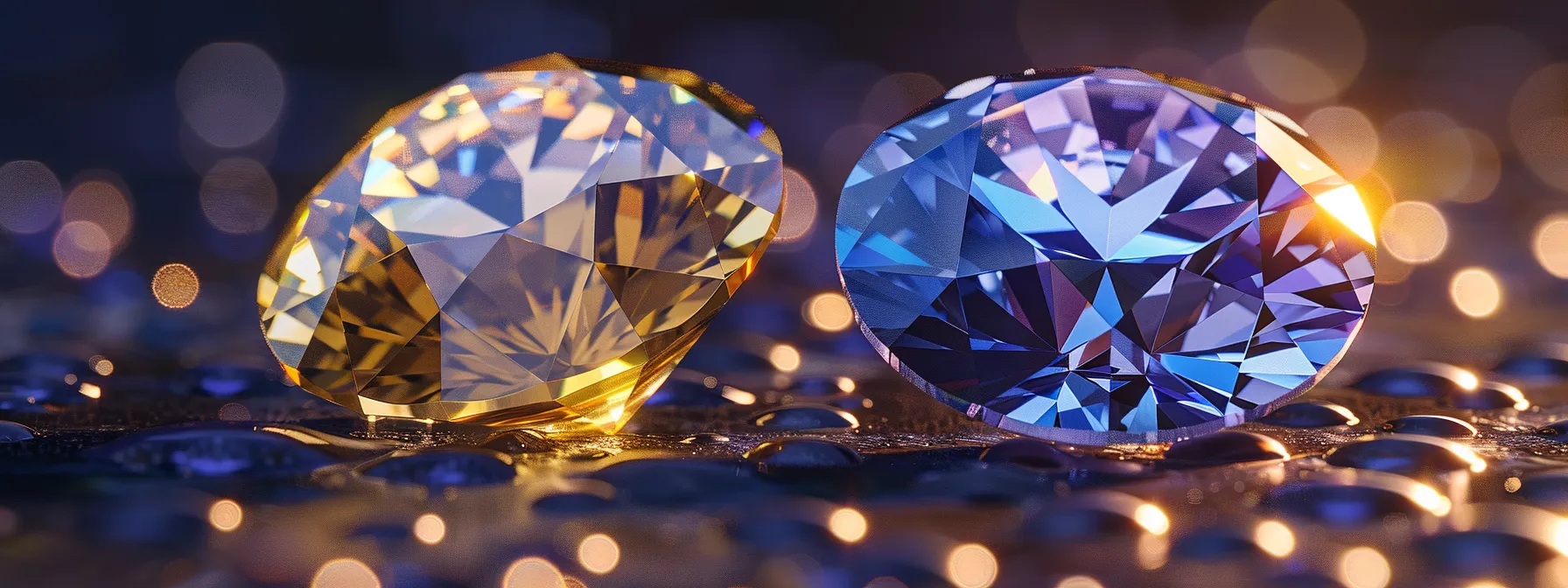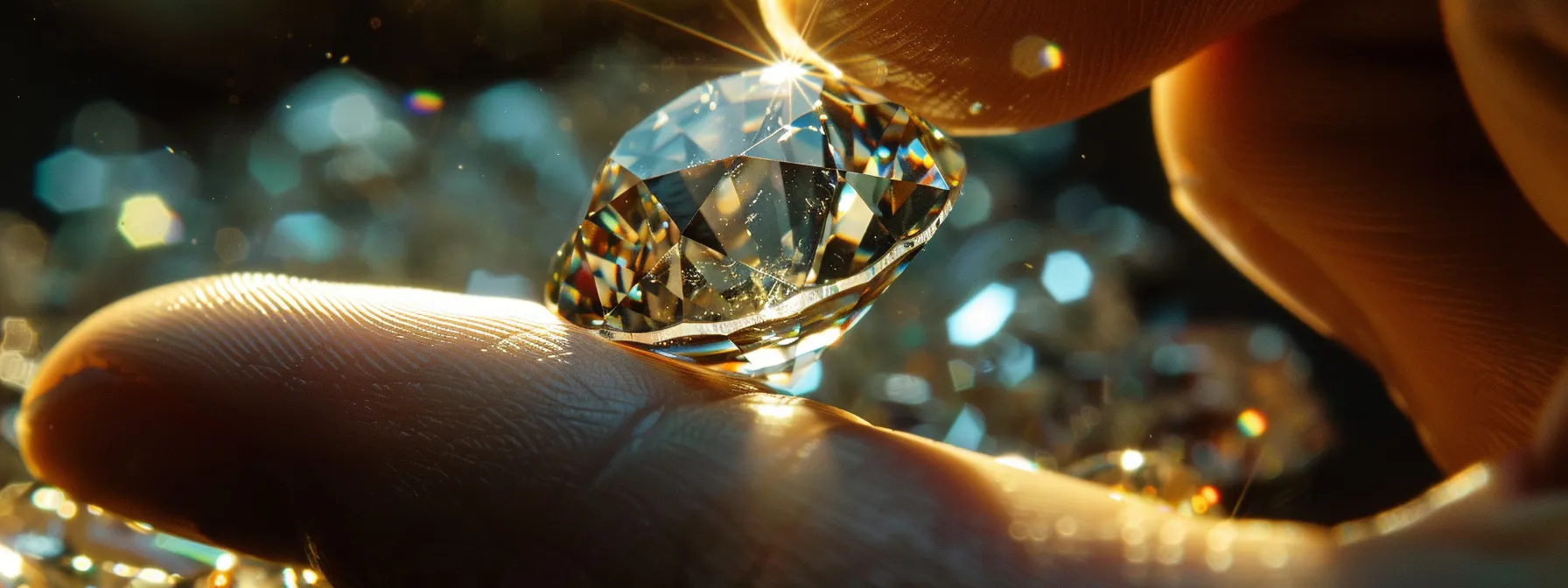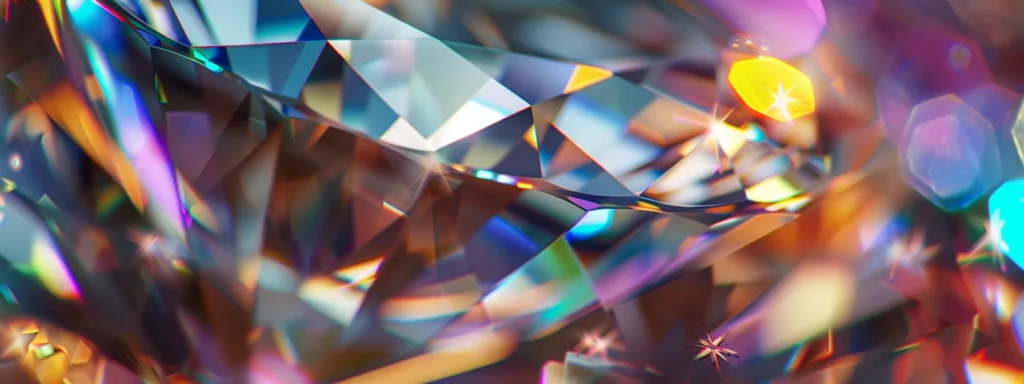Gemstones Therapy
Understanding Gemstone Color and Clarity: A Comprehensive Guide
Understanding Gemstone Color and Clarity: A Comprehensive Guide
Understanding the intricacies of gemstone color and clarity enriches your appreciation for real gemstone bracelets. Picture yourself adorned with a stunning chrysoberyl, its unique hues captivating your eye. Add in factors like fluorescence, and you can truly imagine your future wearing gemstones that enhance your personal style. Unearthing how clarity and color interact will empower you to make informed choices, ensuring your investment comes with a warranty of quality. Each gemstone tells a story, and understanding these elements unlocks a deeper connection. Keep reading to discover how to select the perfect gemstone that resonates with your individuality.
Key Takeaways
- Understanding gemstone clarity and color is essential for valuing and appreciating gemstones
- Regular cleaning and proper storage maintain a gemstone‘s brilliance and overall condition
- Familiarizing yourself with grading systems helps make informed decisions on gemstone purchases
- Consulting reputable jewelers ensures transparency and guidance in selecting quality gemstones
- Recognizing signs of wear allows for timely maintenance, preserving the beauty of your gems
What Is Gemstone Clarity?

Understanding gemstone clarity is key to appreciating the beauty and value of your favorite real gemstone bracelets, like topaz or emerald. Clarity refers to the absence of visible blemishes and inclusions, both of which can impact how light interacts with the stone. Inclusions, often formed during the gemstone’s creation, can add unique character, but they may also detract from its overall appearance. It’s important to distinguish clarity from brilliance; while clarity assesses internal and external flaws, brilliance relates to how well a gemstone reflects light, particularly in the context of a diamond cut. Familiarizing yourself with common clarity grades helps you evaluate gemstones with a discerning eye, ensuring you make informed decisions about your choices, whether for a precious birthstone or a captivating piece of jewelry imagine your future.
Defining Clarity in Gemstones
Clarity in gemstones is a critical factor in gemology, influencing both a stone’s aesthetic appeal and its market value. When assessing clarity, you’ll encounter various elements, such as inclusions and surface blemishes, which can be found in stones like garnet or quartz. Understanding these characteristics can enhance your appreciation for stones like demantoid and help you recognize the craftsmanship of lapidaries who skillfully cut these gems to minimize imperfections.
The Role of Inclusions in Clarity
Inclusions play a significant role in determining the clarity of a gemstone, adding both complexity and character to the crystal. For example, tanzanite may feature unique inclusions that influence its hue and overall appeal, while a feather-like inclusion can be found in spodumene, affecting how light passes through the stone. Understanding these natural imperfections allows you to appreciate the individuality of gemstones, revealing the stories they carry within.
Clarity vs. Brilliance: Understanding the Difference
Clarity and brilliance are two distinct aspects you should consider when assessing gemstones. Clarity focuses on the internal and external characteristics of stones like tourmaline and opal, while brilliance measures how effectively a gemstone reflects light, an attribute often associated with diamond simulants. Understanding this difference helps you provide informed advice to customers who seek both aesthetic beauty and quality in their gemstone selections.
Common Clarity Grades Explained
Understanding common clarity grades is essential when choosing gemstones for your jewelry. For instance, when evaluating a beryl or zircon, consider how their clarity affects appearance, especially when viewed with the naked eye. A gemstone‘s carat weight can also influence clarity, as larger stones may more readily showcase imperfections, impacting your decision when selecting a stunning necklace.
Understanding gemstone clarity lays the foundation for appreciating their beauty. Now, let’s unravel the intriguing science behind gemstone colors that brings these precious stones to life.
The Science Behind Gemstone Colors

Understanding how gemstones acquire their colors opens up a fascinating perspective on the beauty and uniqueness of each stone. Factors such as chemical composition and structure play significant roles in determining the hues you see. For instance, a ruby‘s vibrant red color primarily comes from the presence of chromium, demonstrating how minerals can dictate visibility and appeal. As you explore different gemstones, you’ll notice that color variations can arise even within the same type, often influenced by trace elements or light interactions. This knowledge becomes essential, especially when selecting a gemstone for a pendant, as appreciating these subtleties can enrich your choices and enhance your overall experience.
How Gems Get Their Colors
The colors of gemstones are influenced by their chemical makeup and external factors such as light exposure. For instance, peridot, a striking green gemstone, derives its color primarily from iron present in its structure, allowing it to stand out when worn. When exploring stones from regions like Zambia, known for its beautiful emeralds, you’ll appreciate how varying mineral content creates a distinctive relief in color, enhancing each gem’s allure.
The Impact of Chemical Composition and Structure
The beauty of gemstones often lies in their unique color profiles, which stem from the intricate interplay of chemical composition and structural characteristics. For instance, amethyst exhibits its captivating purple hue primarily due to iron and its formation in a specific crystalline structure. When viewed under magnification, even the simplest cabochon can reveal nuances in color saturation, demonstrating how variations in diamond color can also arise from subtle differences in mineral content.
Color Variations Across Different Gems
Color variations across different gems highlight the intricacies of their formation and the conditions under which they develop. For instance, a sapphire may display a captivating blue hue due to its unique crystal structure, while a fracture can introduce subtle shifts in color saturation, altering its overall appearance. Techniques like facet cutting not only enhance a gem’s symmetry but can also reveal phenomena like asterism, where light reflects off the inclusions, adding another layer of visual appeal.
As you explore the world of gemstones, consider how colors can shift based on their origins and treatments. The Gemological Institute of America provides valuable insights into these variations, educating enthusiasts on how facets influence light interaction and color perception. This knowledge empowers you to appreciate the beauty of each piece, recognizing that color is not just a superficial trait but a reflection of the gem’s unique story.
Gemstone colors hold incredible stories and meanings, but there’s more to these precious stones than meets the eye. Let’s dive into the GIA clarity and color grading system, where each facet reveals the true value of your gemstone.
Navigating the GIA Clarity and Color Grading System

As you examine the intricacies of gemstones, particularly corundum and spinel, navigating the GIA clarity and color grading system becomes essential for making informed choices. Understanding the GIA color scale enables you to appreciate the subtle differences in hue that can significantly influence a gem’s price. Similarly, grasping the nuances of GIA clarity grades will enhance your comprehension of diamond clarity and other gemstones’ qualities. In practical terms, interpreting GIA reports can guide you in assessing the quality of a piece, whether you seek a dazzling gem for a piece of jewelry or an investment in precious metals. By honing your ability to analyze these grading systems, you empower yourself to select stones that meet your aesthetic and financial aspirations.
Breaking Down the GIA Color Scale
Grasping the GIA color scale is vital for evaluating gemstones like morganite or moissanite, as it directly impacts their weight and value. The scale categorizes gemstones from colorless to various shades, allowing you to assess not only the intensity of color but also the presence of any inclusions that may alter appearance. By using a loupe during inspection, you can discern subtle variations, enhancing your ability to select a truly remarkable gemstone that meets your expectations.
Understanding the GIA Clarity Grades
Understanding GIA clarity grades allows you to evaluate a gemstone‘s visual quality effectively. The scale ranges from Flawless (no inclusions visible under 10x magnification) to Included (inclusions visible to the naked eye), giving you clear criteria to assess gemstones based on their imperfections and overall appearance. Each grade highlights essential details that contribute to a gem’s beauty and value, allowing you to make informed purchasing decisions.
Here’s a brief overview of the GIA clarity grading system:
Practical Tips for Interpreting GIA Reports
When you’re examining GIA reports, start by noting the key attributes of the gemstone, such as carat weight, clarity, and color grade. Familiarize yourself with the terminology used in these reports to accurately assess the gem’s quality. This foundation enables you to make informed judgments about the value and appearance of the stone you’re interested in.
Consider reviewing the clarity grade alongside the description, as these details often indicate the visible qualities you should expect. Additionally, the color grade can provide insight into how the gemstone will appear under different lighting conditions. By understanding these elements, you enhance your capability to choose a gem that aligns with your aesthetic preferences and expectations:
- Identify key attributes: carat weight, clarity, and color grade.
- Familiarize yourself with GIA terminology for effective evaluation.
- Review the clarity and color grades for insights on appearance.
Finally, trust your instincts when observing the gemstone itself. If possible, view the gem in different lighting to appreciate its true colors and brilliance, ensuring your selection is one that resonates with you personally.
Each gemstone tells a unique story through its clarity and color. These factors not only enhance its beauty but also significantly impact its overall value.
How Clarity and Color Influence Gemstone Value

Understanding how clarity and color impact gemstone value is crucial for anyone involved in gemstone selection or investment. These two aspects not only define a stone’s beauty but also determine its market worth. You’ll find that gemstones with high clarity and rich, vibrant colors often command higher prices, reflecting their desirability among collectors and jewelers alike. Examining case studies reveals the valuation differences across various stones, showcasing why certain specimens are deemed exceptional while others may fall short. From the collector’s viewpoint, personal preferences play a significant role in assessing value; some may prioritize clarity, while others may be captivated by the depth of color. This nuanced understanding deepens your appreciation for gemstones and informs smarter purchasing decisions.
The Relationship Between Clarity, Color, and Value
The relationship between clarity, color, and value is fundamental in the world of gemstones. When you consider these two factors together, it becomes clear that gemstones exhibiting both exceptional clarity and vibrant color tend to command the highest prices. This is because buyers place significant value on stones that not only look visually stunning but also possess the quality that ensures their allure remains intact over time.
Case Studies: Valuation Differences in Gemstones
In the realm of gemstones, certain case studies highlight the intricate dance between color, clarity, and market value. For instance, consider a vivid blue sapphire with minimal inclusions compared to a similar stone displaying numerous blemishes; the former often fetches a significantly higher price due to its desirable clarity combined with intense color saturation. These case studies illuminate how specific combinations of these attributes can dramatically influence the perceived value of gemstones, guiding your choices whether for investment or personal adornment.
The Collector’s Perspective on Clarity and Color
From a collector’s viewpoint, clarity and color serve as the cornerstones of gemstone valuation. You’ll find that collectors prioritize these elements based on personal preferences and investment strategies, often gravitating toward stones that showcase an exquisite blend of vivid colors and exceptional clarity. This emphasis on quality elevates not just the aesthetic appeal of the collection but also its long-term value in the market.
With the interplay of clarity and color shaping a gemstone‘s allure, it’s time to focus on how you can choose the perfect gem for your collection. Let’s dive into the essential factors that guide you in selecting a gemstone that resonates with your personal style and preferences.
Selecting the Right Gemstone Based on Clarity and Color

Choosing the right gemstone involves understanding the essential balance between clarity and color. Several factors affect clarity, including the presence of inclusions and blemishes that can impact both the aesthetics and value of the stone. As you prioritize color, consider how different hues resonate with your personal preferences and the intended use of the gemstone, whether it’s for jewelry or investment. For first-time gem buyers, focusing on both clarity and color, along with guidance on quality assessment, will significantly enhance your decision-making process. By diving into these factors, you empower yourself to make confident choices that reflect your style and needs.
Factors to Consider When Choosing Gemstone Clarity
When selecting a gemstone, begin by assessing the clarity grade, as it directly impacts visual appeal and value. Pay attention to the type and visibility of inclusions, recognizing that natural imperfections can add character while also affecting how light interacts with the stone. Your personal preferences and intended use for the gem should guide your focus on clarity, striking a balance between aesthetic appeal and quality to ensure the best choice for your collection or jewelry piece.
How to Prioritize Color in Your Selection Process
When prioritizing color in your selection process, first consider which hues resonate with your personal style and the occasion. Evaluate how the shade interacts with different lighting conditions, as colors often shift in appearance based on their environment. Your choice of color should complement not only your preferences but also the purpose of the gemstone, whether it’s for everyday wear, special occasions, or investment purposes.
Advice for First-Time Gem Buyers
As a first-time gem buyer, it’s vital that you take the time to educate yourself about the characteristics of gemstones before making a purchase. Familiarize yourself with terms related to clarity and color, as they play a significant role in defining the beauty and value of a stone. Establish your budget and prioritize what matters most to you—whether it’s clarity, color, or a signature style that resonates with you.
Consider seeking out reputable jewelers or gemologists who can offer guidance and transparency during your selection process. This ensures that you make informed choices and receive genuine value for your investment. Understanding the unique qualities of gemstones allows you to choose pieces that truly resonate with your aesthetic preferences and needs:
Now that you’ve carefully chosen your perfect gemstones, it’s time to ensure they remain as stunning as the day you bought them. Caring for your gemstones is essential to preserving their brilliance and vibrant colors for years to come.
Caring for Your Gemstones to Preserve Color and Clarity

To ensure the longevity of your gemstones, incorporating routine maintenance into your care regimen is essential. Regularly cleaning your gemstone jewelry can prevent dirt and oils from dulling its brilliance and color. However, professional care becomes necessary for more intricate pieces or when you notice signs of deterioration. Being able to identify early indications of clarity or color degradation is vital; subtle shifts may indicate a need for immediate attention. By staying proactive in your approach, you safeguard your investment and maintain the stunning qualities that drew you to these exquisite gems in the first place.
Routine Maintenance Tips for Gemstone Jewelry
Regular cleaning of your gemstone jewelry is essential to maintain its vibrant color and clarity. Use a soft, lint-free cloth to gently wipe down your pieces after each wear, preventing oils and dirt from building up. For deeper cleaning, soak the jewelry in mild soap and lukewarm water, and use a soft brush to carefully remove any debris.
Ensure you store your gemstones properly to avoid scratches and damage. Keep each piece in separate pouches or a cushioned jewelry box, away from direct sunlight and extreme temperatures that could affect their appearance. Regularly inspect your jewelry for loose settings or any signs of wear, addressing issues promptly to preserve their beauty.
Here are some practical tips for maintaining your gemstone jewelry:
- Clean jewelry regularly with a soft cloth.
- Soak gemstones in mild soap and lukewarm water for thorough cleaning.
- Store pieces separately to prevent scratches.
- Keep away from direct sunlight and extreme temperatures.
- Inspect jewelry periodically for loose settings.
Professional Care and When It’s Needed
Professional care for your gemstones becomes essential when you notice signs of wear, such as scratches, dullness, or loose settings. Seeking the expertise of a qualified jeweler ensures that any repairs or cleaning are conducted properly, preserving the stone’s integrity and appearance. Regular evaluations by professionals can help maintain your gemstones in optimal condition, preventing minor issues from escalating into costly repairs.
Spotting Early Signs of Clarity or Color Degradation
Identifying early signs of clarity or color degradation can save your gemstones from potential damage. Look for unexpected changes in brilliance or noticeable dullness; these may indicate that your gemstone requires immediate attention. Additionally, keep an eye on scratches or surface blemishes, which can alter how light interacts with the stone and compromise its overall appearance.
Maintaining vigilance with your gemstones ensures you catch potential issues before they escalate. Here are some key indicators to watch for in your gemstone collection:



